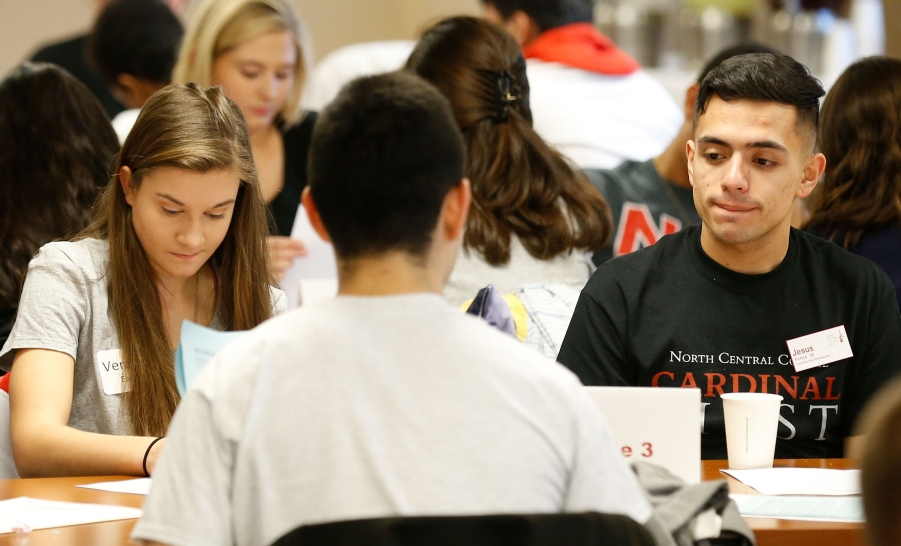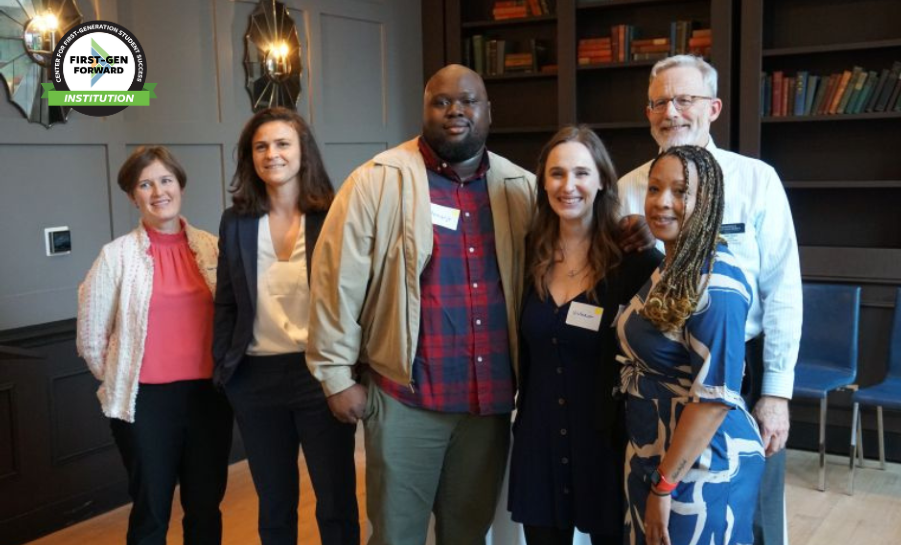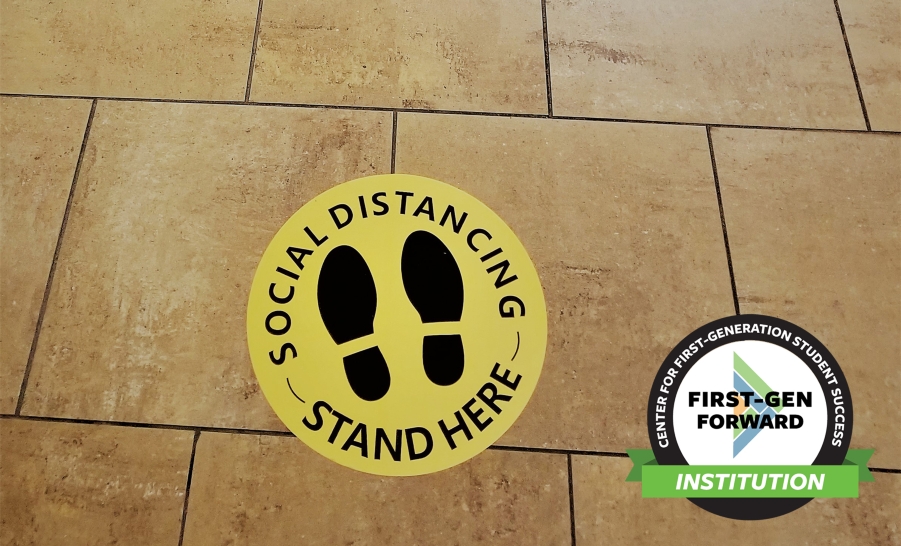First-generation Students: Approaching Enrollment, Intersectional Identities, & Asset-based Success
FirstGen Forward / December 01, 2017

Note: The research linked in this blog is not exhaustive and is intended to offer a glimpse into recent publications and commonly cited sources. Please visit the Research & Policy and News and Blog pages for additional resources.
Postsecondary Enrollment
With the challenges of defining first-generation in mind, putting precise figures on first-generation enrollment can be challenging. It is commonly acknowledged that one-third of currently enrolled undergraduate students meet a definition of being first-generation but with the caveat that the applied definition can swing this figure dramatically. A 2014 report from the National Center for Education Statistics (NCES), using data from the 2011-12 academic year, indicated 34 percent of undergraduates have parents who never entered higher education and another 28 percent have parents who entered higher education but never completed. In applying these two definitions, the number of enrolled students who may be identified as first-generation could be over 50 percent, demonstrating the complexities of pinpointing this figure. This supports the needs for institutions to formally define “first-generation,” collect student data, and report annually. Regardless, we are certain that first-generation college students comprise a large portion of undergraduate students and their educational journeys, from application through completion, are unique.
In comparison to continuing-generation peers, first-generation college students often exhibit different decision-making behaviors when enrolling in college or may have varying levels of support or preparation. A 2018 NCES report on first-generation student access to postsecondary education indicated, along 2002 high school sophomores, 72 percent of students whose parents never entered higher education had enrolled by 2012. This is in comparison to 84 percent of students whose parents had some experience with higher education and 93 percent of students whose parents completed a bachelor’s degree. Warburton, Bugarin, and Nuñez (2001) found that lower percentages of first-generation college students took college entrance examinations, compared to their peers whose parents had postsecondary experience. Continuing-generation students are nearly twice as likely as first-generation student to enroll in college after completing high school with those who choose to attend often delaying entry for a few years. According to a September 2017 NCES report, 76 percent of first-generation students who enroll in college do so at public institutions with 52 percent choosing to attend two-year institutions. In comparison, only 6 percent of first-generation students enrolled in a highly selective four-year institution despite the possibility that a more rigorous environment may be a better fit for their abilities and goals. Understanding the college-going process and making decisions based upon abilities and fit often remain a barrier for first-generation college students that can be detrimental to their ability to enroll, persist and succeed.
Identity & Intersectionality
There is vast intersectionality associated with the first-generation identity that adds additional dimensions to both how a student navigates the postsecondary environment as well as how institutions provide support for these students. Often, first-generation students are associated with being low-income, from underrepresented populations or immigrant families, from rural communities where postsecondary education in scarce, or a host of other identities that shape their worldview and college-going experiences. First-generation students have been found to be a bit older than peers, with a median age of 24, and, because of this and other factors, may have children or dependents to care for or need to hold employment concurrent with enrollment. In a 2007 profile of first-generation college students, researchers with the Higher Education Research Institute at UCLA indicated these factors may negatively affecting college academic and social integration outcomes for these students.
For first-generation students who are low-income, navigating the complexities of college academics in addition to finances can be particularly challenging. A 2016 report by The Pell Institute indicated 21 percent of the estimated first-generation population, are also low-income as defined by Pell eligibility. Moreover, across first-generation students, an estimated 27 percent come from households making less than $20,000 annually with a gap of over $60,000 between median family incomes for first-generation and continuing-generation students. The families of first-generation students are found to be less knowledgeable about the process of financing college education and borrow from the federal government at increasing rates to pay for their education, from 15 percent in 1997 to approximately 37 percent in 2013, with 46 percent of first-generation borrowers attending institutions in the bottom quartile in default rate measurements.
Racial identity is also a common focus of the first-generation intersectional identity. While the NCES reported number of White students who identify as first-generation, an estimated 49 percent, is sizeable, the number of White students who are continuing-generation exceeds 70 percent. However, across other racial identities, 27 percent of Hispanic students are first-generation in comparison to only 9 percent of continuing-generation students. Similarly, 14 percent of all first-generation students are Black or African American but only comprise 11 percent of continuing-generation students. Additionally, first-generation students are English as a second language learners at a rate of over 20 percent.
While myriad other identities also shape first-generation student success, many institutions utilize socioeconomic status and race as a factor in identifying eligible students for support, scholarship, and transition programs or for assigning responsibility to particular campus office or department. While this is a successful approach, it also opens the possibility for first-generation students who do not identify as low-income or being from an underserved racial background to not receive beneficial services. This renews calls for reconsidering how services for first-generation students are being offered and for institutions to carefully consider how messaging about the first-generation identity is being conveyed by campus offices, service providers, classroom faculty, and through institutional marketing so students may gain the confidence needed to seek resources or build community within their, often newfound, identity.
Considering Deficits and Assets
Current conversations regarding institutional support of first-generation college students often include a necessary shift from deficit mindsets to asset-based approaches. Simply, how can we help first-generation students utilize their strengths and talents for greatness rather than simply focusing on the barriers to success they each may face. This shift is often employed through intentional matriculation practices and academic advising. While having an asset-based approach is imperative, and one the Center aims to support institutions in providing, it is also critically important to understand the experiences of first-generation students in order to turn these perceived deficits into opportunities.
Critical to this conversation is understanding that first-generation students are less likely than continuing-generation peers to seek assistance, particularly academic, when facing difficulty making the need for effective institutional outreach important. Moreover, first-generation students who are low-income may forego purchasing necessary textbooks or may not be able to acquire the technology needed to be successful in college. Complicating this is the tendency of first-generation students to attend less selective institutions that are geographically closer to home despite possibly possessing the talent to be at a more rigorous institution. Because of deficits in academic preparation for some first-generation students, remediation is a common part of the college experience yet, without advising guidance, can delay time to completion. Similarly, first-generation students complete fewer credit hours each academic year when compared to continuing-generation peers, which can be detrimental to student motivation and confidence as well as progress toward successful outcomes.
While understanding these experiences is important, allowing them to define the experiences of first-generation college students or to be the driving factor in institutional decision-making is problematic. To combat the negative effects of deficit approaches, institutions are utilizing principles from positive psychology to shape programs, services, and advising. The intention is to not focus directly on these struggles but to create environments where the strongest qualities of a student can be identified, understood, and nurtured toward strengthening self-efficacy, resilience, and belonging. Through gaining these skills, psychologists believe students build a greater sense of wellness that provides an ability to better manage life stressors. As a result, students become more likely to seek assistance, engage within the campus community, and begins to close the gap in cultural capital first-generation students often face.
While this data may appear overwhelming, it also reinforces the importance of providing intentional supports and services to first-generation students so equitable environments for success are readily available. By understanding why and how first-generation students may stumble, we are able to focus attention on utilizing their academic strengths, social skills, and career and vocational interests to create intentional pathways for persistence and completion. Moreover, informed faculty and administrators can develop networks and procedures that allow institutions to provide a seamless, proactive support system for first-generation students.





